Painful symptoms in the lower back are concerned with 80% of the planet's population at different stages of life.Often these are manifestations of osteochondrosis.Doctors say the fact - the disease is no longer the fate of the elderly.Increasingly, the symptoms of the disease manifest themselves in people who have not reached an age line of 30 years.Without treatment, osteochondrosis leads to complete immobilization of the lumbar spine and the patient's subsequent disability.
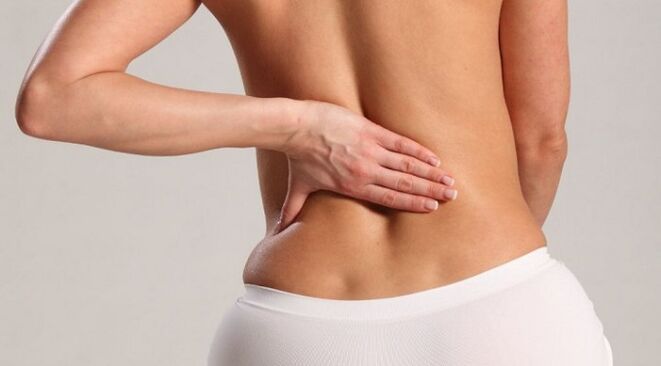
What is osteochondrosis of the lumbar spine
The diagnosis implies the course of degenerative processes in cartilage, which consists of intervertebral joints.Osteochondrosis in the lower back is characterized by changes in joints and vertebrae precisely in the lower back.
Osteochondrosis is a gradual degeneration of the cartilage in the bone.
Often osteochondrosis ends with the formation of an intervertebral hernia, which is a source of constant lower back pain in the patient.Pop osteochondrosis gives rise to nerves, as well as blood vessels, causing a violation of trophic tissues from internal organs, which is full of symptoms of functional disorders in body functioning.
The causes of lumbar disease
Spine osteochondrosis belongs to various diseases, whose exact causes have not yet been established.It is known that the defeat of the spine is preceded by metabolic disorders, to which a large number of adverse factors can lead.The most common examples:
- Acute lack of movement.
- Details of electrolyte metabolism.The intervertebral joint trophy is disturbed due to chronic diseases.
- Congenital or acquired violations of ODA.
- Many physical activity is the most common reason.
- Incorrect lifestyle.Abuse of salt, fried, fat and smoked products leads to dystrophic changes in intervertebral joints.
With osteochondrosis, the back muscles are gradually atrophy, the patient begins to tilt.
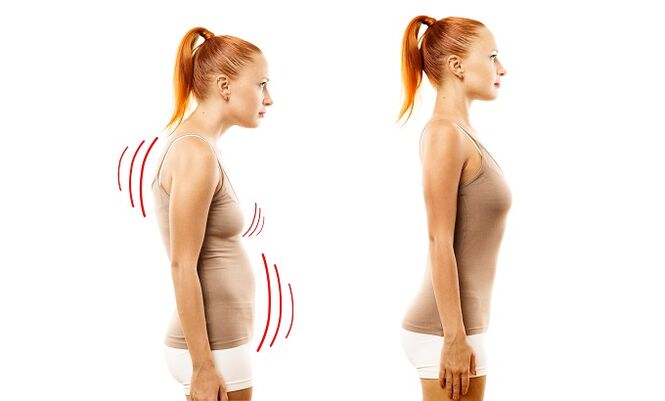
Doctors observe a hereditary predisposition to the development of the disease.In addition, the provocative factors include the lack of treatment for the curvature of the spine - lordosis, scoliosis, kyphosis.
Characteristic symptoms
Signs of osteochondrosis in the lower back are characterized by the appearance of various symptoms, as well as by the development of three pathological syndromes: root, ischemic, spinal.
The symptom of pain may seem:
- Lumbalgia- painful lumbar pain.The symptom disappears almost completely when the body is placed in a horizontal position.
- Lumbago- Lightning pain.The symptom is distinguished by the ability to radiate.
- Sciatica- Lumbar pain spreading on the buttocks and legs.The symptom is accompanied by the loss of surface tissue sensitivity.
The back in the back are compared to the current shock, and the patient freezes in the position where there is no pain.
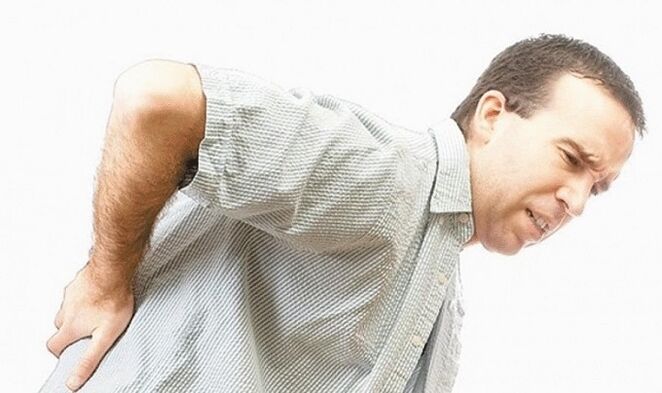
Signs of lumbar osteochondrosis include symptoms of specific syndromes:
- The symptoms of root syndrome include perforation pain in the innervated area by a compressed nerve.At the same time, the epicenter of painful symptoms is observed in the limbs, buttocks, hips and at the bottom of the abdomen.
- Symptoms of ischemic syndrome are associated with circulatory disorders, lack of flow for certain nutrient tissues.
- Symptoms of spine syndrome include muscle atrophy, spill displacement, a change in the pelvis position, which leads to obvious gear changes and the patient's movement method.
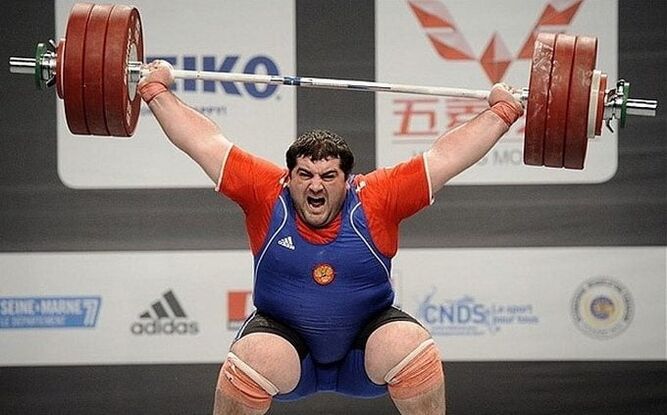
When lifting the severity of the nerve roots and the blood vessels are squeezed and the pain in the nerve zone begins to worry.
Differences from other signs
Distric lesions of lumbar vertebrae are accompanied by various characteristic symptoms only for this disease:
- Constant cold of the buttocks and hips skin.
- Decreased libido, impotence.
- The feeling of goose bumps inside the thigh and buttocks.
- Increased dry skin in the lower back and buttocks, accompanied by peeling.
- Teenager for constipation.
- Urine incontinence.
- A burning sensation in the sacred.
Until the complete coincidence of the manifestations of the disease with the symptoms described requires diagnostic studies to confirm the diagnosis (magnetic resonance imaging, radiography, computed tomography).
Determination of internship and type
Intervertebral osteochondrosis can be acute and chronic.Often there is a transition from the disease in a slow form, as it is difficult to completely cure the disease.Chronic osteochondrosis is characterized by the regular occurrence of relapses - they complicate the patient's life during the off -season.
Local degenerative changes are quite rare.Often, the destruction of lumbar vertebrae is accompanied by common osteochondrosis, which affects various parts of the spine at once.The disease is characterized by the vastness of pain and obvious disorders of the patient's mobility.
4 degrees are distinguished by osteochondrosis:
- Initial changes.The core of the jacket moves inside the album.Symptoms - Shelters may occur in the affected section.
- Damage to the fibrous ring.Several cracks are formed in it, an increase in the mobility of the vertebrae and the hypertonization of the nearest muscles is observed.
- Rupture of a fibrous ring.It is accompanied by the department's severe pain, the formation of hernias and root syndrome.
- Folding column deformation.It is accompanied by a displacement of the vertebrae, as well as the growth of the bone tissue of the spine, which leads to the patient's immobilization.
The stage of disease development is determined by a vertebrologist using a palpation exam and diagnostic measures.
How osteochondrosis in the lower back is treated
The treatment of lumbar osteochondrosis depends on the degree of changes.A prerequisite - taking timely measures, conducting an examination and choosing a treatment tactic so as not to start the disease.In the posterior stages of lumbar region osteochondrosis, only the surgical treatment of the spine (vertebroplasty) is effective.
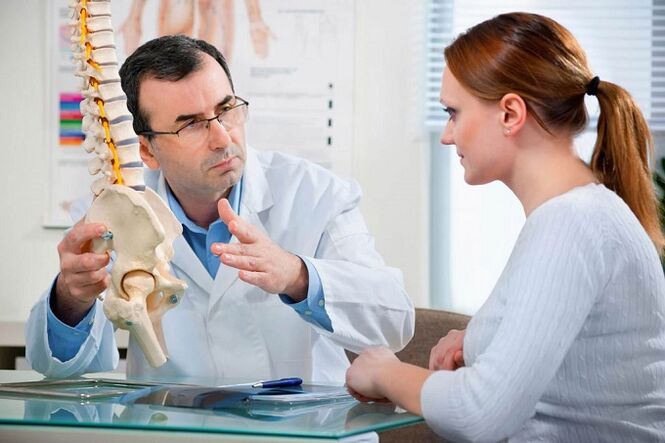
It is very important to consult a doctor for treatment on time, because in the final internships of osteochondrosis, only surgical treatment of the spine is effective.
The treatment of lumbar osteochondrosis has the main objectives:
- Elimination of the cause of dystrophic processes.
- Removal of symptoms of the disease.
- Activation of intervertebral joint restoration.
- Strengthening the muscle apparatus.
To achieve objectives, a set of measures is used, including exercise therapy, physiotherapy, diet, drug treatment, massage.An important condition is regularity.Methods for treating osteochondrosis may include fixing the affected area of the back with corsets.Getting rid of osteochondrosis and preventing your relapse will help kinesiotherapy.
Therapeutic hunger is performed according to the doctor.As a rule, compliance with the principles of a healthy diet, information to the minimum of salt, as well as normalizing the drink regime.
With severe osteochondrosis of the lumbar spine, it may be necessary to comply with the bed regime in the first treatment.After eliminating intense pain, the patient should get up, perform elementary exercise.
With lumbar department osteochondrosis, doctors complement the treatment regime with physiotherapeutic procedures:
- Electrophoresis.
- Magnetotherapy.
- Acupuncture.
- Electroacupuncture.
It is important to observe the regularity of procedures for osteochondrosis, as well as undergoing a complete treatment course.
With lumbar spine osteochondrosis, as in other disease locations, an increase in physical activity is recommended by performing exercises recommended by the orthopedic doctor.
If the belt will help
It is worth choosing a belt for the lower back with osteochondrosis with only the assistant doctor.There are bandages, corsets, heating belts and neoprene that have various indications and against -indications for their application.
Using a corset and dressing is one of the main auxiliary methods to restore joints.The hard belt of osteochondrosis fixes the lower back in a given position, removes the load from the muscles and joints.A heating belt for osteochondrosis can be used independently to eliminate pain and prevent the relapse of the disease.The dog belt protects well the lumbar region of the drafts, relaxes the muscles.
With serious damage, only one doctor selects the belt for the treatment of osteochondrosis.As a rule, these are improved hard corsets that provide the immobility of the lumbar and sacral spine.
Massage
With lumbar osteochondrosis, a therapeutic massage course is indicated, with the objective of normalizing the trophic joints of the lower back and bringing the muscles to a normal state.The massage should be performed by a specialist.Against the osteochondrosis Indication for massage is intervertebral hernia.Manipulations that imply a strong mechanical effect (the use of plastic devices and vibration masseurs) are prohibited.
Exercises
Lumbar spine exercises in the scope of osteochondrosis exercise therapy should select an orthopedist.General rules for the treatment of exercise:
- The predominance of static exercises.
- Lack of clear movements during execution.
- Moderation of physical activity.
- Sparing methods that exclude vertebrae destruction.
The regularity of physical effort is important.Osteochondrosis exercises are included in the daily charging program, performed daily.
Drug therapy
The duration of the course of treatment for lumbar spine osteochondrosis, as well as the list of medicines, is determined by the doctor.
In the early days of therapy, they are prescribed:
- Injections of Aine.
- Vitamin Injections of Group V.
- CondoProtective injections.
- Muscle relaxing injections.
- External NSAIDs.
After eliminating intense pain and acute inflammation, the patient is transferred to forms of medicine tablets.The first two weeks continue to treat NSAIDs.The use of chondroprotectors involves prolonged comprehensive treatment with a combination of internal and external dosage forms.
When detecting lumbar disease in the early stages, the medicines of the chondroprotect group are prescribed.The minimum duration of its reception is 3 months.In the absence of pronounced painful painful symptoms, internal use of NSAIDs is replaced by external painkillers to reduce the negative effect of pharmacological agents on gastric mucosa.
With intense pain, the block is performed - the introduction of painkillers in the affected area of the lower back.
The symptoms of advanced lumbar osteochondrosis are able to spoil a personal life.For successful treatment of the disease, you should consult a doctor in the first signs of the disease - pain at the bottom of weak gravity.Complex therapy opportune can avoid irreversible changes in the lumbar spine.

























